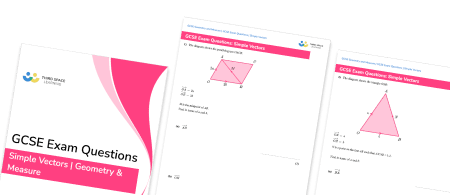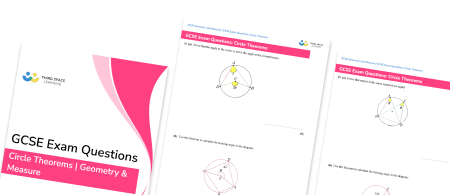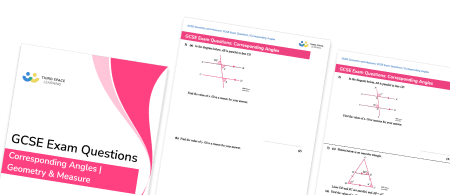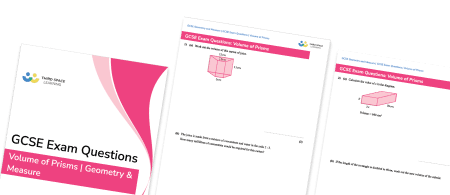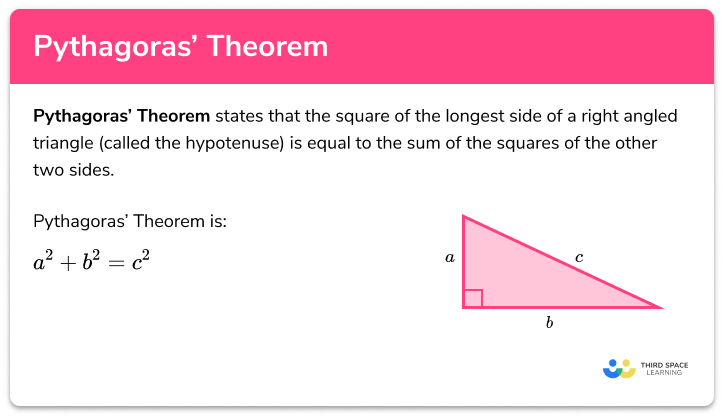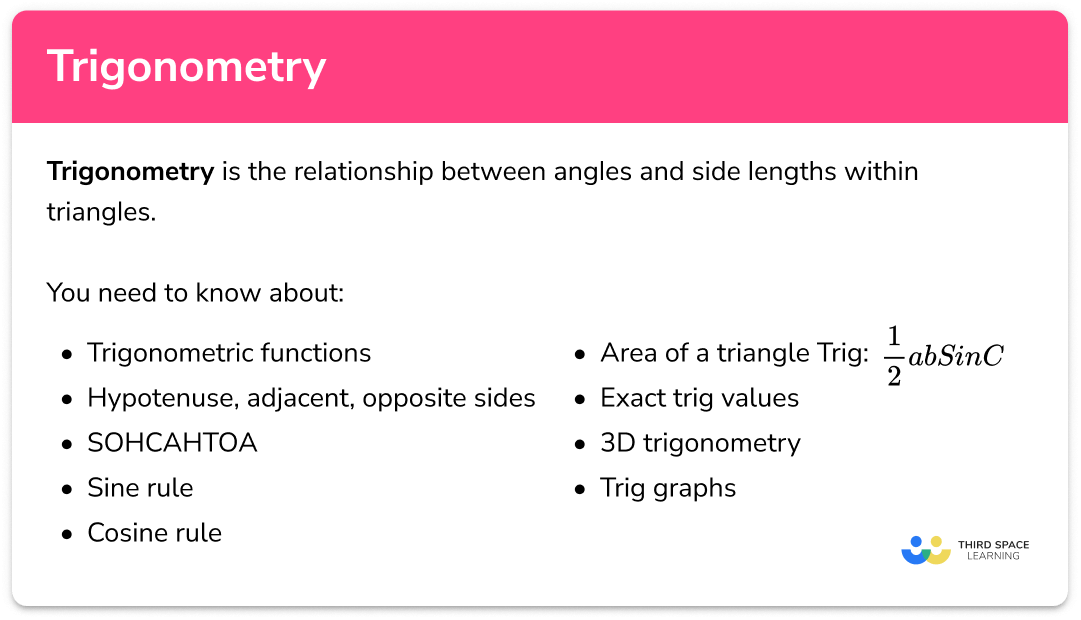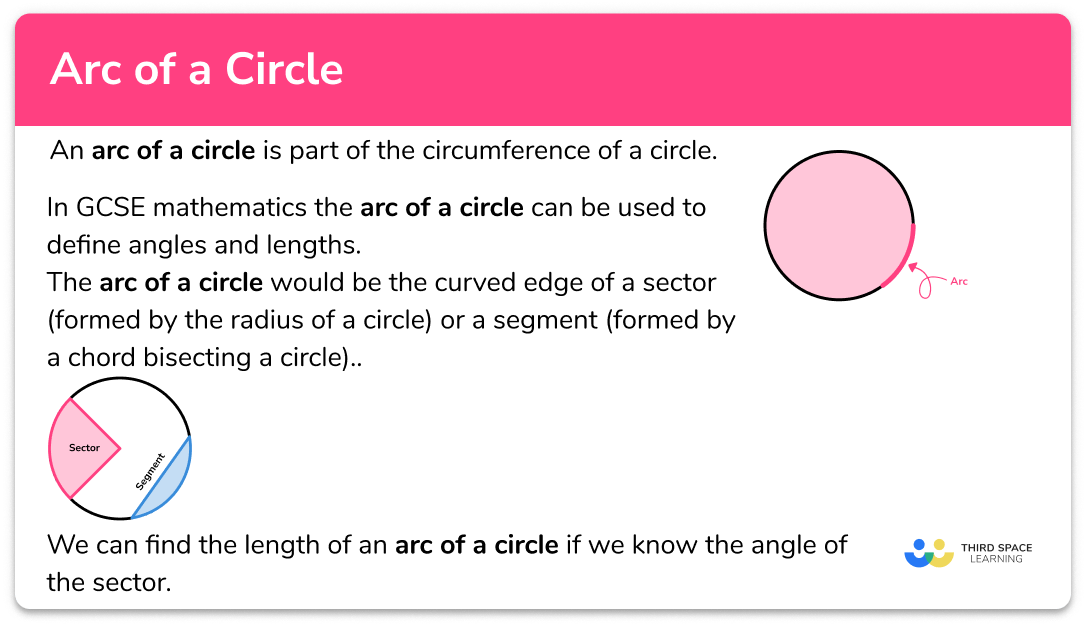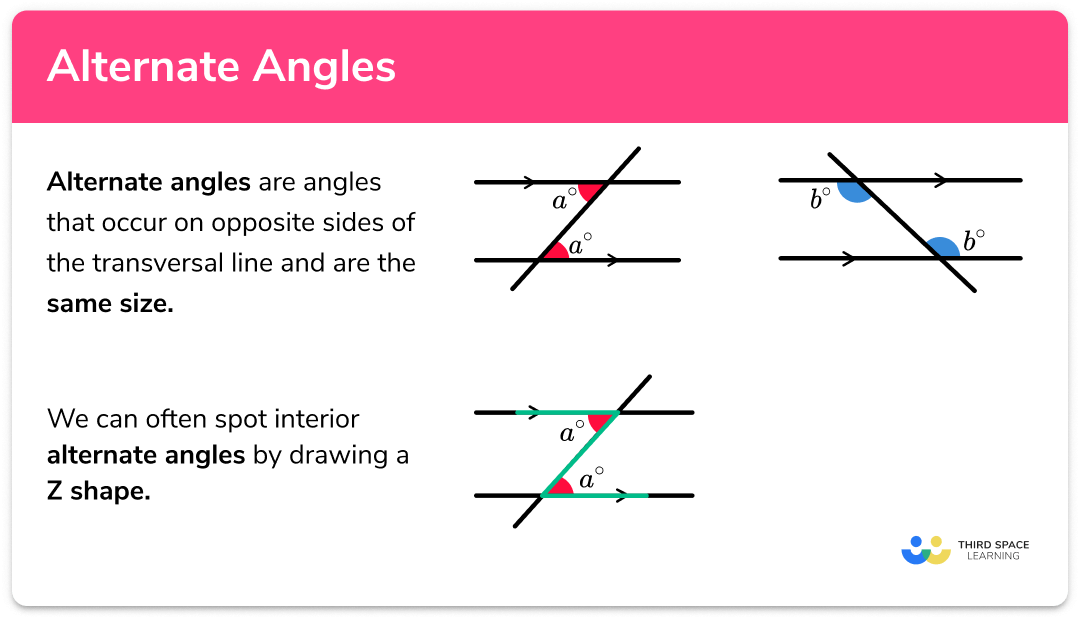FREE DOWNLOAD
Angle Rules Worksheet

Help your students prepare for their Maths GCSE with this free angles rules worksheet of 36 questions and answers
- Section 1 of the angles rules worksheet contains 27 skills-based angles rules questions, in 3 groups to support differentiation
- Section 2 contains 3 applied angles rules questions with a mix of worded problems and deeper problem solving questions
- Section 3 contains 6 foundation and higher level GCSE exam style questions
- Answers and a mark scheme for all questions are provided
- Questions follow variation theory with plenty of opportunities for students to work independently at their own level
- All questions created by fully qualified expert secondary maths teachers
- Suitable for GCSE maths revision for AQA, OCR and Edexcel exam boards
Angle rules at a glance
An angle is formed when two line segments or rays intersect at a vertex and are typically measured in degrees using a protractor. We classify angles based on their size. The different types of angle required at GCSE are acute, obtuse, reflex and right angle.
Angle facts are useful for finding missing angles in geometry problems. The basic angle facts used most frequently are: angles in a triangle sum to 180°, angles in a quadrilateral sum to 360°, angles on a straight line sum to 180° and angles around a point sum to 360°.
There are some additional angle properties that are useful when finding unknown angles in 2D shapes. For example, the base angles in an isosceles triangle are equal, as are opposite angles in a parallelogram.
Looking forward, students can then progress to additional angles rules worksheets and other geometry worksheets, for example an angles in polygons worksheet or volume and surface area of spheres worksheet.

For more teaching and learning support on Geometry our GCSE maths lessons provide step by step support for all GCSE maths concepts.
Do you have students who need additional support?

With Third Space Learning's secondary maths tutoring programmes, students in Year 7-11 receive regular one to one maths tutoring to address gaps, build confidence and boost progress.
"My confidence in the tutoring is high. We've had some phenomenal results. I even had one girl get a Grade 8 this year; she came to every tutoring session."
Stacey Atkins, Maths Director, Outwood Grange Academies Trust

